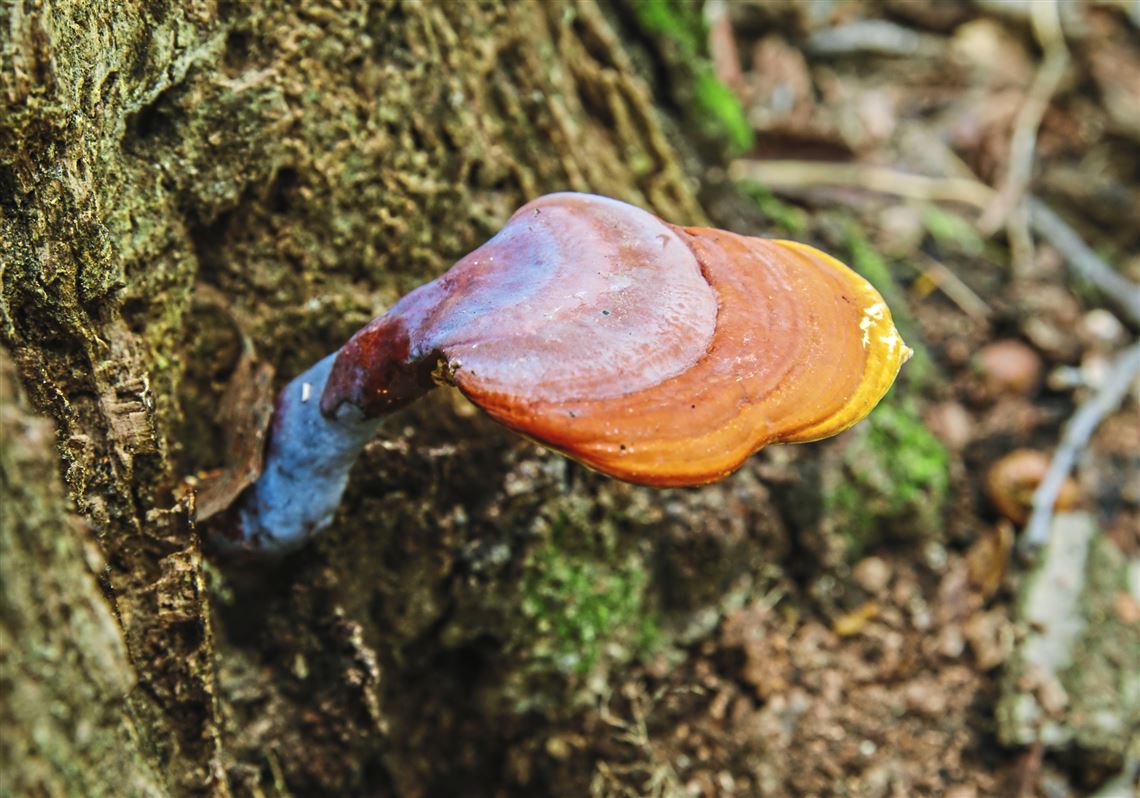Some are toxic and deadly. Others are hallucinatory. Many are tree parasites and so odd-looking you might fear touching let, alone eat them.
No surprise that 40 percent of people say they won’t eat them, with internet sites listing them among the least-likable foods, especially given their brown, slimy textures and earthy aromas and tastes that only a gourmet chef could love.
Perhaps the biggest turnoff is the simple fact they are the fleshy fruit of fungi that bear their spores.
But all yuck factors aside, mushrooms may be the globe’s healthiest food. And to the contrary, 60 percent of people agree they are most delicious. It helps explain why mushrooms have been the cornerstone of Asian medicine since ancient times.
Only in recent decades have Americans begun realizing their full medicinal value, initially because of what they don’t have — cholesterol, sugar, saturated fats and sodium.
But research and public interest now is shifting to their complex carbohydrates and high fiber and protein content.
As Asian cultures long have known and preached, mushrooms are natural medicine. The research spotlight now is focused on their long-established health benefits from such nutrients as beta glucan, also found in whole grains, that boost the immune system and, in some forms, lower cholesterol.
Polysaccharides in mushrooms are key nutrients that help maintain the body’s energy levels. Mushrooms also have high concentrations of glutathione, a powerful antioxidant linked to two dozen health benefits including anti-infection and anti-tumor properties along with protections against diabetes complications.
More recently the focus has turned to another antioxidant — ergothioneine or “ergo” — long identified but largely overlooked because its role was unclear. As it turns out, mushrooms have the highest concentrations of ergo, which offers multiple health benefits, with research honing in on its anti-aging properties.
The fact that our cells contain an ergo transporter, which allows it to readily enter our cells, indicates its importance in cellular function. And, as it turns out, American diets appear to have low levels of ergo.
That’s the conclusion of Robert B. Beelman, Penn State University professor emeritus of food science and director of the university’s Center for Plant and Mushroom Foods for Health. He is currently focused on ergo, and finding other researchers worldwide interested in finding ergo’s full role in nutrition and health.
An important recent study, he said, showed that “the lack of ergo may be linked to neuro-degenerative diseases,” with ergo declining with age. Those with impairment from Parkinson’s and Alzheimer’s diseases, he said, were shown to have lower ergo levels.
An analysis he completed also showed that ergo consumption levels, on average, were highest in nations with the longest lifespans, and lowest in those with the shortest. He offers such information with caution that association doesn’t mean one causes the other.
“Doctors and mostly the clinicians doing research are not that much interested in a food approach or nutritional approach to disease,” said Mr. Beelman, who holds a doctorate in food science. It does explain the difficulty in attracting funding for such research. “What I would say is, give this approach a chance because the public is leaning in that direction and looking for something other than pharmaceuticals.”
“I’ve been doing this stuff for 47 years,” he said, “and I’ve never been more excited about looking into something this important to health.”
Wild vs. commercial
Penn State’s interest in mushroom arises in part due to Pennsylvania’s role as the nation’s largest producer of mushrooms. There are 68 mushroom farms in Chester County that employ 9,500 people and produce 580 million pounds of white, brown and specialty mushrooms a year. Pennsylvania produces 63 percent of the nation’s white mushrooms, according to the Mushroom Farmers of Pennsylvania.
Shitake, portabella and oyster mushrooms are typically available in grocery stores. Asian research long has centered on mushroom species available only to Americans willing to hunt for them.
Those claiming the most attention are maitake, turkey tail, reishi, oyster (types unavailable in stores), chaga and lion’s mane, all available locally or regionally. Chaga is more common in more northern counties. We now are entering the autumn season. Morels are found only in the springtime.
Some mushrooms are woody and inedible but can be ground up for use in teas, or boiled in soups then removed, much like a bay leaf, before serving. They also are available in tinctures, elixirs or capsules.
Adam Haritan, 31, of Hampton, is one of the most notable local mushroom hunters and experts who conducts classes and mushroom-hunting events with a focus on everything from their science, impacts on culture, availability and methods of preparation. On a recent morning, he visited North Park to point out (but not harvest due to a prohibition there) of wild mushrooms readily available this time of year.
He overcame a persistent health problem, he said, with help from mushrooms, which he consumes daily either as food or in tinctures he sells under his Learn Your Land label. He emphasizes safety — a key reason for his classes and mushroom-hunting events. Avoid unfamiliar mushrooms. Also be careful about toxic look-alikes that resemble edible ones.
“I do several public and free walks a year,” said Mr. Haritan, who holds a degree in nutrition and dietetics from the University of Pittsburgh, and serves as vice president of the Western Pennsylvania Mushroom Club. “When you are looking for mushrooms, you are not just looking for mushrooms. You are looking at trees, swampy areas, soil types, elevation and all kinds of different things that, when you put it all together, it’s much easier finding them.”
Wild mushrooms serve as antihistamines to help with seasonal allergies. Some fight infections. They even help protect against air pollution. “Even in conventional medicine, they are using mushrooms but not large scale and hopefully we can catch up with Japan and China. They have extraction techniques that are standardized.”
Much room for mushrooms
Shiitake mushrooms are predominant in medicinal-mushroom research. Other studies focus on health benefits from chaga, himematsutake and lion’s mane, with a study showing turkey tail mushrooms generating an immune reaction against breast cancer.
Research has found anti-aging effects from cordyceps, a mushroom thats energy-boosting compounds reduce fatigue. Reishi has been shown to lower blood sugars in diabetes and help control weight.
All are local or regional mushrooms available in the fall season, Mr. Haritan said.
Recent studies available on the National Institutes of Health website, pubmed.com, found that mushroom consumption can lower the risk for breast cancers, including pre-menopausal hormone-related cancers. Earlier this month, a study found that a rare puffball mushroom — Calvatia nipponica — could be used as a cancer treatment. In July, another study showed that many anti-tumor effects from mushrooms “are making them a promising candidate” for development of anti-cancer drugs.
A study published this month provides “a scientific rationale” for using a combined mixture of medicinal mushrooms and ginseng root extracts to treat human colorectal cancer. That followed a July study presenting evidence that folk culture likely was correct in finding mushroom compounds that could be used in cancer management.
“Everything a person needs for health is out there and closer than you might believe,” Mr. Haritan said, also citing many other medicinal mushroom studies.
“If you are happy and satisfied without mushrooms in your diet, that’s perfectly fine,” he said. “But if you have been struggling with health for 10 or 15 years and have tried everything, I’d have you try chaga or reishi or turkey tail. That’s when it likely will open your eyes to their benefits.”
David Templeton: dtempleton@post-gazette.com or 412-263-1578. Mr. Haritan’s website is available at: learnyourland.com.
First Published: September 26, 2017, 10:00 a.m.

















